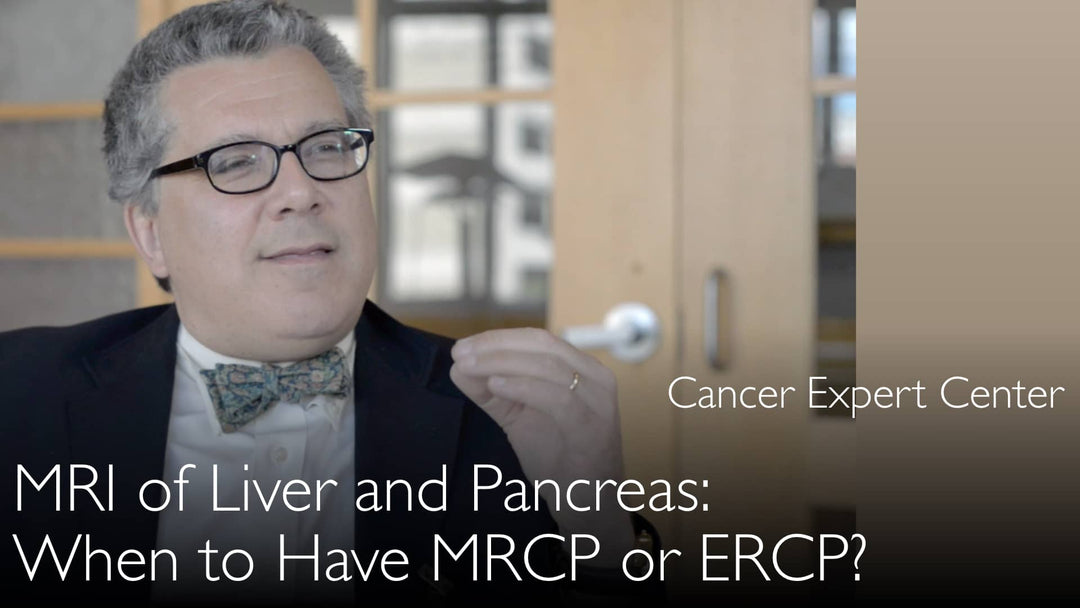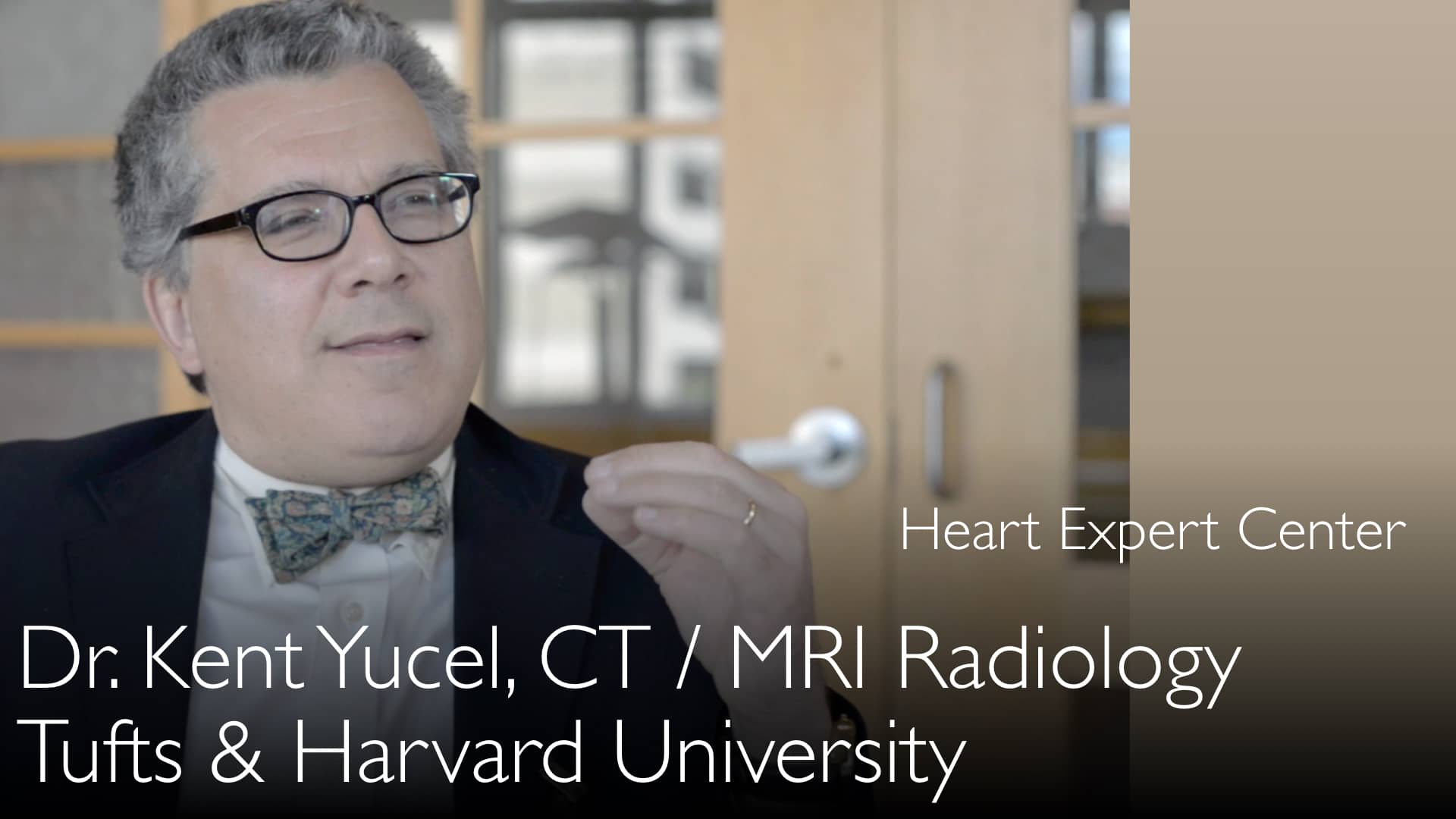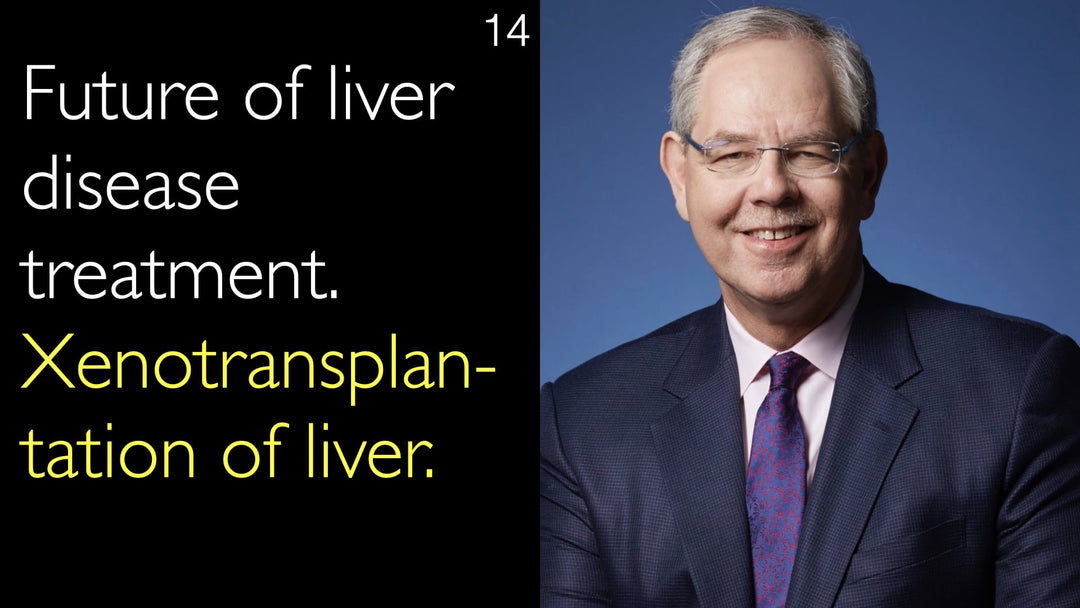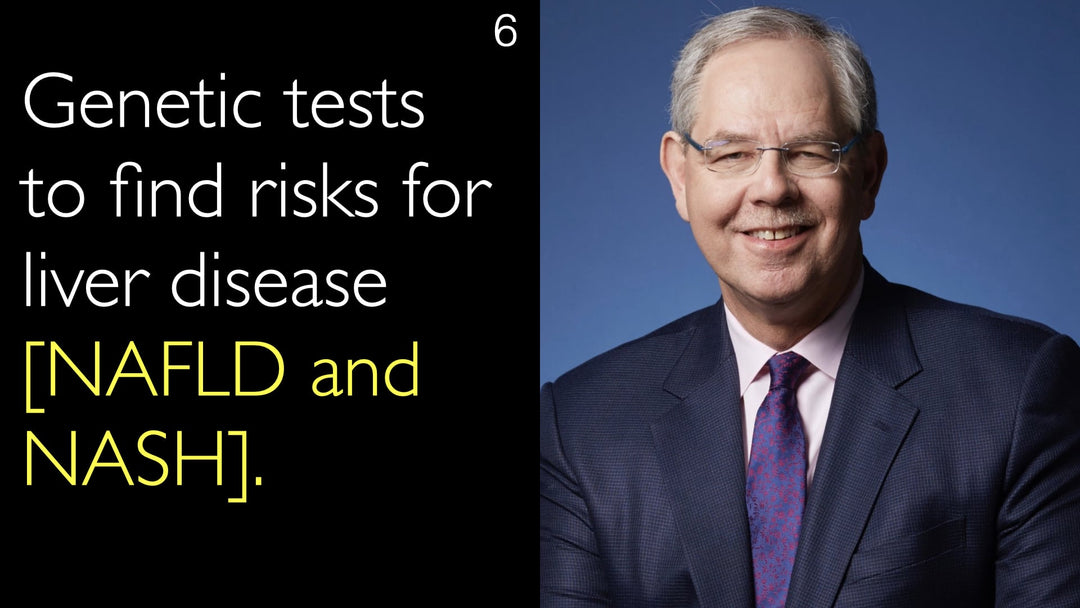Johtava CT- ja MRI-asiantuntija, lääketieteen tohtori Kent Yucel, selostaa MRI- ja MRCP-tutkimusten ratkaisevaa merkitystä maksa- ja haimasairauksien diagnosoinnissa. Hän kuvaillee yksityiskohtaisesti, milloin nämä ei-invasiiviset kuvantamismenetelmät ovat tarpeellisia. Tri Yucel selventää keskeisiä eroja MRCP:n ja invasiivisemman ERCP-menettelyn välillä. Hän käsittelee myös haimasyövän seulonnan rajoittunutta käyttöä. Tri Kent Yucel korostaa erityisen tärkeää poikkeusta: maksasyövän seulonta korkean riskin potilailla, joilla on kirroosi tai maksan rasvakertymä.
Magneettikuvaus ja MRCP maksan ja haiman tutkimuksessa: Opas invasiivittomaan kuvantamiseen
Hyppää osioon
- Ultraääni ensimmäisenä diagnostisena vaiheena
- MRCP vs. ERCP: Oikean tutkimuksen valinta
- Haimasyövän seulonnan todellisuus
- Maksasyövän seulonta korkean riskin potilailla
- Maksan magneettikuvauksen lisähyödyt
- Täysi transkriptio
Ultraääni ensimmäisenä diagnostisena vaiheena
Lääketieteen tohtori Kent Yucel korostaa, että ultraääni on hepatobiliaarisen järjestelmän ensisijainen ja tehokkain alkuvaiheen tutkimusmenetelmä. Se on laajalti saatavilla, edullinen ja vaatii vakiintunutta asiantuntemusta. Ultraäänellä voidaan tunnistaa yleisiä ongelmia kuten sappikivet, mikä usein ratkaisee jatkotutkimusten tarpeen. Tohtori Yucel painottaa, että jos ultraäänitulokset ovat negatiiviset tai paljastavat selvästi hoidettavissa olevan poikkeavuuden, se usein riittää diagnoosissa.
MRCP vs. ERCP: Oikean tutkimuksen valinta
Kun ultraääni havaitsee sappiteiden ongelman, tohtori Kent Yucel selittää, että tietokonekerroskuvaus tai MRCP (magneettiresonanssikolangiopankreatografia) on seuraava ratkaiseva vaihe. MRCP tarjoaa yksityiskohtaisen, invasiivittoman arvion sappitien tukoksen syystä. Tämä eroaa huomattavasti endoskooppisesta retrogradisesta kolangiopankreatografiasta (ERCP), joka on erittäin invasiivinen toimenpide. ERCP vaatii endoskopian, toteutetaan sairaalassa ja on huomattavasti kalliimpi. MRCP:n käyttö ensisijaisena voi usein tunnistaa ongelman ja välttää tarpeettoman ERCP-toimenpiteen.
Haimasyövän seulonnan todellisuus
Lääketieteen tohtori Anton Titov kysyy MRCP:n mahdollisuudesta seuloa vaarallista haimasyöpää. Tohtori Kent Yucel vastaa selkeästi: säännöllinen seulonta ei ole tehokasta yleisväestölle. Haimassa esiintyy usein hyvänlaatuisia kystejä ja muutoksia, joiden havaitseminen johtaa vuosien tarpeettomiin seurantatutkimuksiin. Ratkaisevasti, hoidettavissa olevan haimasyövän havaitsemisen ikkuna on hyvin kapea. Vuotuiset magneetti- tai tietokonekerroskuvaukset eivät todennäköisesti löydä syöpää tarpeeksi ajoissa vaikuttamaan ennusteeseen verrattuna tavalliseen lääketieteelliseen hoitoon.
Maksasyövän seulonta korkean riskin potilailla
Tohtori Kent Yucel korostaa kriittistä poikkeusta: potilaat, joilla on taustalla krooninen maksasairaus. Henkilöt, joilla on esimerkiksi kirroosi, fibroosi tai edistynyt rasvamaksatauti (NAFLD) alkoholismin, hepatiitti B:n tai hepatiitti C:n takia, ovat merkittävästi kohonneessa riskissä sairastua maksasyöpään. Näille potilaille tohtori Yucel vahvistaa vuotuisen seulonnan ultraäänellä tai maksan magneettikuvauksella/MRCP:llä olevan elintärkeää. Ennakoiva seuranta voi paljastaa syövän varhaisessa, hoidettavissa olevassa vaiheessa ja mahdollisesti johtaa parantumiseen.
Maksan magneettikuvauksen lisähyödyt
Sappiteiden arvioinnin ja syövän seulonnan lisäksi tohtori Kent Yucel huomauttaa, että maksan magneettikuvaus tarjoaa muita merkittäviä etuja. Kehittynyt kuvantaminen on erinomainen diagnosoidessa ja luokitellessa yleisiä hyvänlaatuisia muutoksia kuten maksahemangioomia ja yksinkertaisia kystejä. Lisäksi magneettikuvauksella on tärkeä rooli maksavaurion laajuuden arvioinnissa rasvumisen ja alkoholista riippumattoman rasvamaksan (NAFLD) yhteydessä. Tohtori Anton Titov korostaa, että yksityiskohtainen tieto on ratkaisevan tärkeää NAFLD-vaiheiden tarkkaan määrittämiseen ja hoitostrategioiden suunnitteluun kroonisessa maksasairaudessa.
Täysi transkriptio
Lääketieteen tohtori Anton Titov: Maksan ja haiman magneettikuvaus on tärkeä rasvamaksan, maksasyövän ja sappitiesyövän diagnosoinnissa. Pitäisikö potilaiden tehdä MRCP vai ERCP? Onko MRCP aina tehtävä ennen ERCP:tä? Milloin maksan ja haiman magneettikuvaus tarvitaan ultraääniseulonnan jälkeen? Kenelle potilaalle kuvantaminen on hyödyllistä? Johtava radiologi selittää.
Maksan ja haiman magneettikuvaus, MRCP vs. ERCP: Miten maksasyöpä diagnosoidaan? Magneettikuvaus ja MRCP käytetään kroonisen maksasairauden arvioinnissa. Vatsan magneettikuvaus auttaa diagnosoimaan primaarisia ja sekundaarisia maksasyöpiä. Rasvamaksan magneettikuvausarviointi auttaa kvantifioimaan vaurion laajuuden. MRCP:ää käytetään alkoholista riippumattomassa rasvamaksataudissa. MRCP voi myös välttää tarpeen invasiiviselle ERCP:lle, joka vaatii sairaalahoidon.
Maksan magneettikuvaus voi auttaa määrittämään rasvoittumisasteen ja NAFLD-vaiheet. Toinen lääkärinmielipide MRCP-tuloksista varmistaa oikean ja täydellisen diagnoosin. Se auttaa myös valitsemaan parhaan hoidon krooniselle maksasairaudelle. Hae toinen mielipide rasvamaksataudesta ja maksasyövästä varmistaaksesi optimaalisen hoidon.
Maksan magneettikuvaus voi myös havaita maksahemangiooman, kavernoosin hemangiooman ja yksinkertaiset kystat. Massojen arviointia ei-kirroottisessa maksassa tehdään usein MRCP:llä ja ERCP:llä. Magneettiresonanssikolangiopankreatografia on tärkeä maksasyövän tutkimusmenetelmä. Maksan ja haiman syövän seulonta ja diagnosointi magneettikuvauksella.
Lääketieteen tohtori Anton Titov: Voimmeko siirtyä muihin elimiin: maksan ja sappiteiden magneettikuvaukseen? Magneettiresonanssikolangiopankreatografia (MRCP) on yksi yksityiskohtaisimmista tavoista arvioida maksaa, haimaa ja sappiteitä. Jos potilaalla on tunnettu tai epäilty ongelma näissä elimissä, milloin magneettikuvaus on hyödyllinen?
Lääketieteen tohtori Anton Titov: Mitä potilaiden tulisi odottaa MRCP:ltä tai maksan magneettikuvaukselta?
Lääketieteen tohtori Kent Yucel: Hepatobiliaarinen järjestelmä arvioidaan ensisijaisesti ultraäänellä, kuten sydämessäkin. Ultraääni on ensimmäinen tutkimus – edullinen, laajalti saatavilla ja vaatii vakiintunutta osaamista. Se on lähes aina hyvä alku.
Jos ultraääni on negatiivinen tai paljastaa hoidettavissa olevan poikkeavuuden kuten sappikivet, se usein riittää. Jos sappiteissä havaitaan ongelma, tietokonekerroskuvaus tai MRCP voi olla hyödyllinen seuraava vaihe arvioidakseen tilannetta tarkemmin.
Lääketieteen tohtori Anton Titov: Mikä yleensä aiheuttaa ongelman?
Lääketieteen tohtori Kent Yucel: Yleensä kyse on tukoksesta.
Lääketieteen tohtori Anton Titov: Mikä aiheuttaa sappiteiden tukoksen?
Lääketieteen tohtori Kent Yucel: On olemassa invasiivinen tutkimus nimeltä ERCP (endoskooppinen retrogradinen kolangiopankreatografia). Se on lopullisempi sappiteiden tutkimus, mutta erittäin invasiivinen: vaatii endoskopian, on kallista ja tehdään sairaalassa. MRCP, invasiiviton magneettikuvaus, voi olla hyödyllinen ennen ERCP:hen siirtymistä. Usein se tunnistaa ongelman ja välttää tarpeen ERCP:lle.
Lääketieteen tohtori Anton Titov: Voiko MRCP:lla seuloa haima- tai maksasyöpiä, jotka ovat erittäin vaarallisia?
Lääketieteen tohtori Kent Yucel: Ei, yhdellä poikkeuksella. Haimasyöpä on nopeasti etenevä, ja haimassa on paljon hyvänlaatuisia muutoksia. MRCP-seulonta löytää usein vähäisiä, merkityksettömiä muutoksia, jotka johtavat vuosien turhaan seurantaan. Valitettavasti hoidettavissa olevan haimasyövän havaitsemisen ikkuna on niin kapea, että vuotuiset kuvaukset eivät todennäköisesti löydä syöpää ajoissa vaikuttamaan lopputulokseen verrattuna perushoitoon.
Lääketieteen tohtori Anton Titov: Eli haimasyövän seulonta ei ole hyödyllistä, vaikka sairaus onkin kamala.
Lääketieteen tohtori Kent Yucel: Yksi alue, jossa magneettikuvaus on hyödyllistä seulonnassa, on potilailla, joilla on maksakirroosi, fibroosi tai rasvamaksatauti alkoholismin tai hepatiitti B/C:n takia. Nämä potilaat ovat kohonneessa riskissä, ja heille suositellaan vuotuista ultraääni- tai magneettikuvausseulontaa varhaisen syövän havaitsemiseksi. Usein syöpä voidaan löytää tarpeeksi ajoissa hoidettavaksi ja parannettavaksi. Tämä on poikkeus, mutta koskee vain potilaita, joilla on taustalla maksasairaus.
Lääketieteen tohtori Anton Titov: Mitkä ovat MRCP:n, magneettikuvauksen ja ERCP:n käyttöaiheet?








